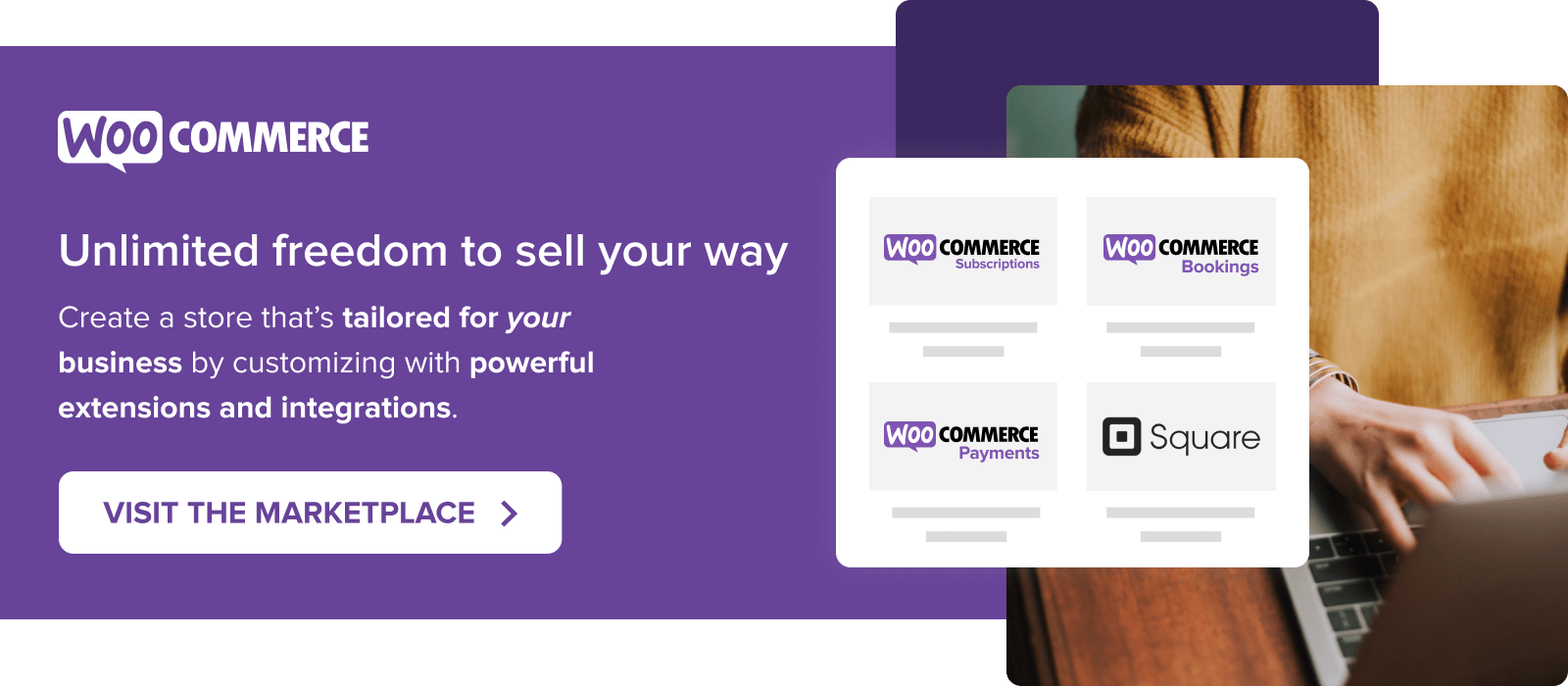The first post in this series introduced us to digital wallets and digital assets, especially NFTs. The second post was a deeper dive into how Woo merchants can use NFTs for profitability and growth. In this post, we’ll help you choose the NFT solution that’s right for your store.
As with our post on how to choose a crypto payments partner, we won’t make specific partner recommendations. Instead we’ll explore what requirements sit behind the use cases we covered last time, and empower you, dear Woo merchant, to make your own decision according to your use case, situation and goals.
NFT jargon buster
- AirDrop: When a token creator sends tokens (of any kind) to one or more wallets. Yes, this is a thing in crypto: sometimes you wake up and someone has sent you free money.
- Claim drop: Projects or creators often require people to claim tokens rather than just sending them via AirDrop. This usually involves visiting a website, connecting your wallet, and proving you own it.
NFTs are small software programs that conform to certain standards that allow them to interact with whichever blockchain(s) they are deployed to. This section is a little technical but don’t worry, Woo’s NFT partners (Verisart and Boson Protocol at the time of this posting) all do a great job of abstracting this complexity and helping you to make good decisions about how you want to do things.
Here we’ve bundled many individual requirements together into high level sets that broadly represent the steps of an NFT project.
Design decisions range from the deeply technical (which chain(s) do you want to use, how can you keep transactions cheap and where to store your data) right through to more business-focused (how many NFTs do you want to make available and what image(s) will you use to make them attractive in a user’s wallet).
Typically, a partner solution will help guide you through deciding things like:
- Do you ever need or want your customer to know that your experience uses NFTs? Your customers probably don’t care to know that you’re using SSL, cookies or other technical terms when delivering your experience. The same applies for NFTs. For some merchants, talking about the technology will make sense — for others it’s something to be avoided.
- Will the NFTs be free or paid for? Will it be a static price or do you want to use a bonding curve, dutch auction, or any other kind of dynamic pricing?
- Whether you want to set Royalties (i.e. ask for a % of secondary sales).
- The number of NFTs to be made available and the minting schedule (dates, who can mint, etc).
- How many NFTs each customer can buy (or be sent).
- Whether the NFT represents a physical asset and if so how the two will be linked.
- Whether you want the NFTs to be transferable or sellable.
This step ends once your NFT software is deployed to the public blockchain and is ready for use.
Once your NFTs are ready to go, you need to get them into the hands (digital wallets) of your prospects or customers. If your target recipients don’t already have a digital wallet, that needs to be a key consideration. Some partners may give you the ability to create digital wallets for your recipients, others may have different recommendations. How you’ll distribute your tokens depends on how you’ve designed the overall experience, but generally, there will be three different experiences for your customers:
- Normal minting: The default way that NFTs are distributed is that a user sends crypto to the NFT smart contract address and receives the NFT automatically, all managed by the NFT contract. Increasingly it’s possible to allow minting by paying with fiat currency through credit cards too.
- AirDrop or “claim drop” pre-minted NFTs: With this method, you send NFTs out or make them available to claim instead of asking people to complete a transaction. This can work better if you want to ensure it’s free for users to get the NFT, or you have a non-technical set of target users and you want to make things as simple as possible.
- Lazy minting: In this experience, users don’t receive their NFT until after they have paid for it or claimed it. This can be useful in a couple of scenarios. First, if you’re not sure what the appetite for your NFTs will be, you can pre-sell them and only mint them once you’ve got enough orders to justify doing so. Secondly, it can be a useful way to comply with regulations: e.g. if you have a two-week refund obligation for E.U. customers, then a refund is much easier to undertake if you haven’t done anything on-chain yet.
A partner solution may offer one or more of these methods. Either way, this step ends when you have a bunch of customers or prospects with your NFT in their wallets.
NFTs are a somewhat abstract concept so it’s a good idea to make sure that your NFT holders can see their NFTs. Savvy users can visualize NFTs using native crypto tools like wallets, blockchain explorers, or NFT marketplaces. For non-technical users, you’ll want to think about how their NFT appears within your overall experience design. Perhaps it’s shown in their ‘My Account’ area (and then referred to within the purchase and checkout process as discussed below). If the NFTs are part of a community experience, you may want to think about how users can display their NFTs for others to see, too.
When reviewing potential NFT solutions, make sure that the customer experience of receiving, viewing, and using the NFT can meet your expectations.
You don’t need to give your NFT utility — it can just be a badge for your customers to proudly display. But that’s definitely leaving a lot of creativity on the table. In our previous post on NFTs, we covered a bunch of use cases you can build on top of NFTs. It’s important to ensure that the experience you’re trying to build is supported by your chosen solution.
If you want to allow customers to resell or transfer their NFTs, then you might want that to be something you can manage and control. It’s possible to design NFTs so that they can only be sold or transferred through an official marketplace. This allows you to design that experience exactly as you’d like — whether that’s enforcing royalties or ensuring that you have an email address and personal details for any future NFT buyers or recipients for marketing or compliance purposes.
Around the the immediate design space that this series of posts has explored, you’ll also want to consider:
- Lifecycle experience design: NFTs are for life, not just for Christmas. If you’re going to sell or distribute NFTs, you’re setting the expectation of “more to come”. What does that “more” look like and are you committed to executing against that expectation?
- Marketing: Depending on your technology solution and experience design, you may need your customers to know that you’re using NFTs (or you may not.) This needs to factor into your marketing plans. Further using NFTs opens up new opportunities for marketing, especially in terms of community and partnerships. Can holders of other NFTs also access your token-gated features? Do you want to send NFTs to holders of competitor NFTs? How will you tell them you’ve done that and how they can use them?
- Communications and support for customers: Onchain technologies like NFTs offer both new opportunities and challenges for customer comms & support. Your planning here will depend on the experience(s) you’re creating and the technology you’re using. Sometimes you may not have an email address or even a name for your NFT holders — how will you communicate with them? What sort of support can your NFT solution provider offer to support your internal support function?
- Analytics and insight: Generally, NFTs are viewable on open, public blockchains. So in theory you can see which addresses hold your NFTs, if/how/for how much they are selling and indeed what other activities those wallets are performing. How could this information benefit your business and how will you analyze and use it? How might your competitors, suppliers or customers use it?
NFTs are a relatively new technology for most people (both merchants and customers) and we’re not going to tell you it’s totally straightforward, simple, and that there are clear, repeatable playbooks for you to follow. But on the other hand, it has unique potential for creative and innovative brands to engage and co-create with their prospects and customers.
We can’t wait to see what you build with Woo!

About
Dave Lockie
Dave is a visionary at the forefront of the Web3 revolution and currently leading the charge at Automattic. A native of the UK, Dave now soaks up the sun and tranquillity in Portugal. Dave shares his Web3 expertise through his advisory role at Adnode and past collaborations with WordProof, Grant for the Web, and his founding venture, Pragmatic. He also co-chairs the BIMA Web3 council.

